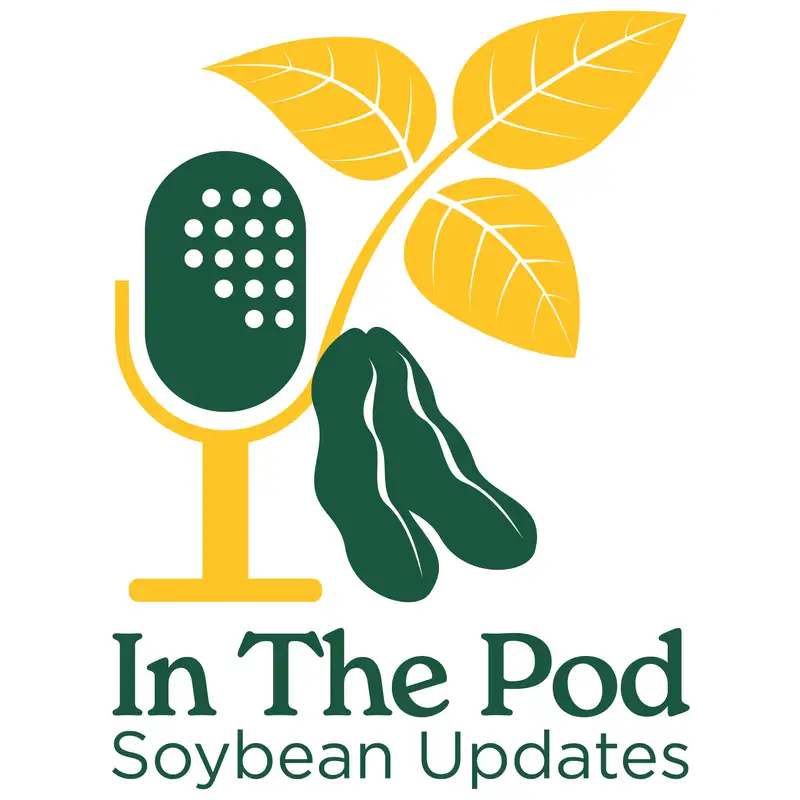05/22/25 Seeding Smarts: Soybeans in the Semi-Arid West
You're listening to In The Pod, soybean updates, a weekly trek into the latest soybean information from NDSU Extension. Like any crop, soybeans grow according to their environment. The Southwestern Part of North Dakota generally produces lower yields. John Rickertson, NDSU Headinger research agronomist, has a crop update and some results from a five year study. John, what's the soybean situation in the Southwestern part of the state?
John Rickertsen:Well, certainly we'd actually been terribly dry here, but starting just a week ago, we started to get to rain and we're over five inches now. So, you know, field work's kind of ground to a halt, but it was badly needed rain. So nobody's complaining and they've gotten their early crops in. So they're looking pretty good for those guys looking to plant soybeans here, we're still a good time. I would have no problems planting soybeans clear through to the May. And I think we'd have a window to still get those in and still be able to get things to maturity in the fall.
Bruce Sundeen:How much did the recent rain help?
John Rickertsen:Tremendously, I can't tell you. We went into this spring with a whopping six to eight inches of soil moisture at the top. Our profile was absolutely, the tank was empty. We were needing rain. We've caught some earlier rains, but you know, we didn't even fill up that top foot of soil. So this is just tremendous. This is not only gonna help the crop ground, it's helping the pasture ground out there too. We really needed this.
Bruce Sundeen:John, what can you tell us about your five year study?
John Rickertsen:Okay. Well, we started to see some more soybeans acres out here. I'd had some, you know, grant work from soybean council where we'd done some things on planting dates and that one thing I'd wondered is what about kind of populations can we go with out here? There's been a ton of work done in the Corn Belt looking at soybean seeding rates, but nothing done in the semi arid West where we really don't grow soybeans. We're dealing with yields that can be 15 to 25 bushel is pretty typical. If it does happen to rain in August, we can maybe hit a 35 or 40, but typically lower yields. What could we get by population and maybe can we lower populations? Because you know, seeds expensive if I'm dealing with only 20 bushel soybeans, know, what can I do to reduce those costs and you know, help my income if I'm going to grow soybeans? So I undertook the study. I did a five year study actually, so I could try to get different years, different environments. It's highly variable out here. And I had seeding rates from 20,000 to 180,000 every 20,000. So a broad range of seeding rates, some of them very, very low. And I also did this and drilled seven inch rows and 30 inches row crop. Undertook that just to see, like I said, what would kind of be the ideal rate out of here because there's just no data out here in the semi herd. It's all been done in wetter because we weren't growing soybeans out here 20 ago really.
Bruce Sundeen:Any surprises when you adjusted the rates?
John Rickertsen:What really surprised me, it followed on with what we saw in the Corn Belt where they would say if I have a hundred thousand plants out there, I kind of maximize my yield. And we actually saw the same thing here actually about a hundred thousand plants is kind of after that it was really flat. Really didn't see any yield difference between a 180,000, you know, pretty significant difference there. Yield did start to fall off as I went down to 80 a little bit. And certainly when I got down there to 20 or 40,000 seeds, which if you know anything about soybeans, that is a very low seeding rate. 20,000 is, you know, close to what we plant corn out here. That's not a lot of plants. Actually, I only lost about 25% of my yield by doing that 30%. But I mean, it certainly didn't have the crop competition and canopy you did later and wouldn't want to go that low. But it surprised me that, you know, I thought maybe because our plants don't get as big out here, we'd have to keep our seeding rate actually higher. Actually fell a lot with the work we saw east of here, which actually did surprise me a little
Bruce Sundeen:John, what about drill versus rows? What did you find there?
John Rickertsen:What I found was very interesting as far as population, they tracked very closely to each other. So didn't see a whole lot of difference. The curves when I look at them are almost identical. The difference is what you can't see in the yield numbers out here where we don't necessarily get a lot of growth. You know, I'm growing 0.2 soybeans. They're not a real bushy plant. And then when it's dry, they might not get very big. When I drill them all canopy, but when they're in rows, I have space that's open the whole season. Even in August, I've got space out there. And what happens when I have space? Weeds. So, weed control is potentially better in a seven inch row.
Bruce Sundeen:Thanks, John. Our guest has been John Rickertson, NDSU research agronomist. You're listening to In The Pod, soybean updates, a weekly trek into the latest soybean information from NDSU Extension supported by the North Dakota Soybean Council.

